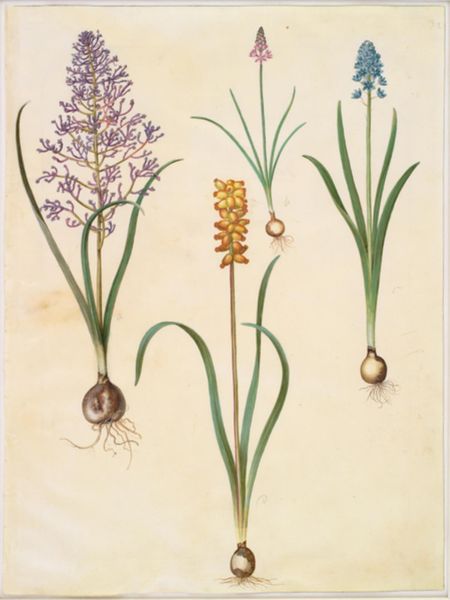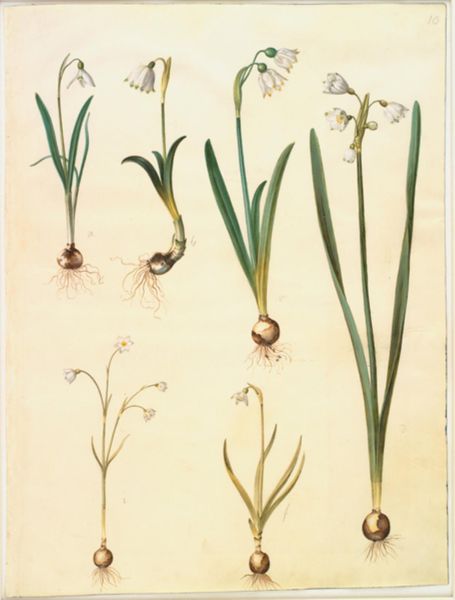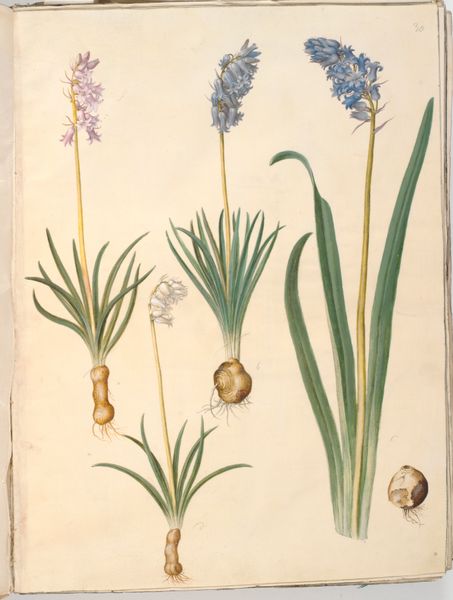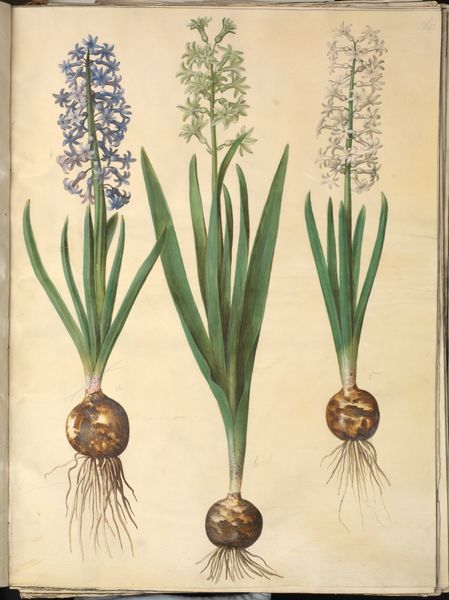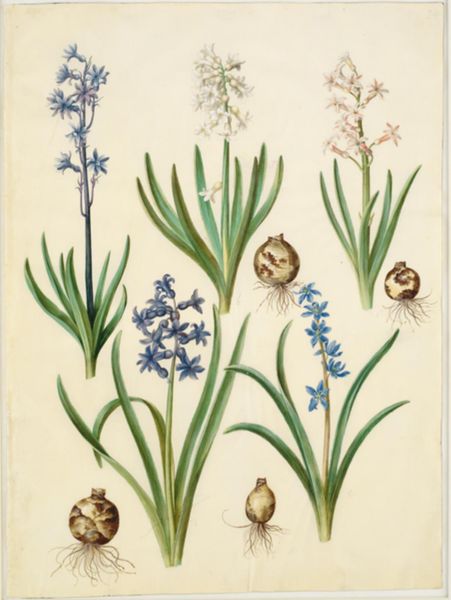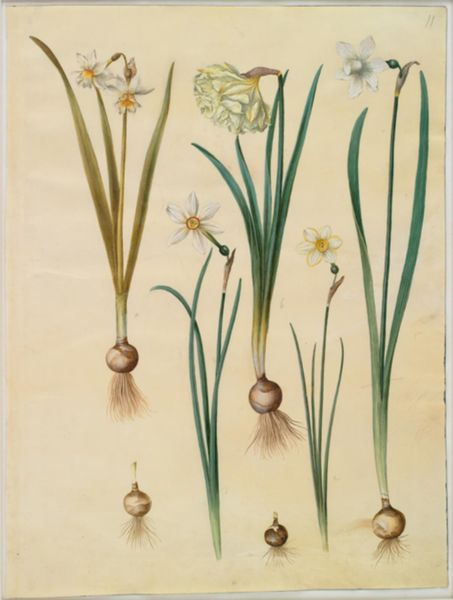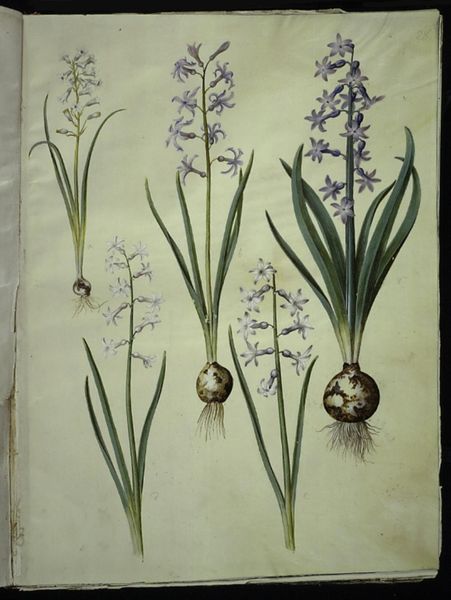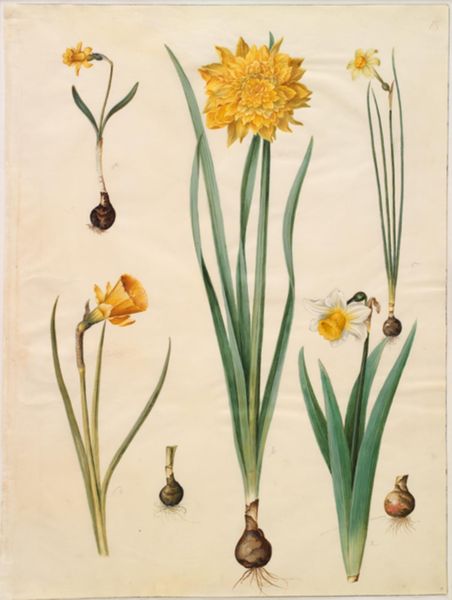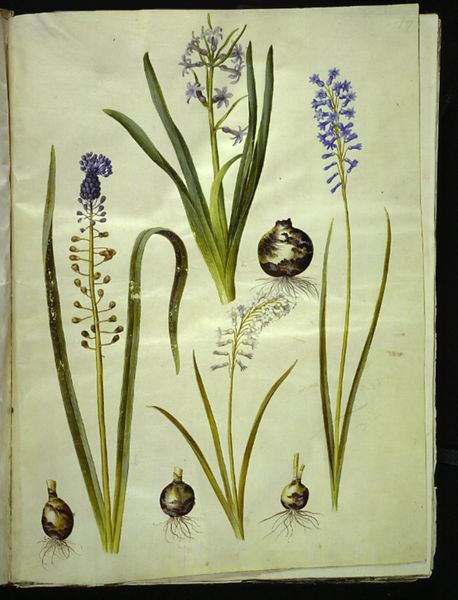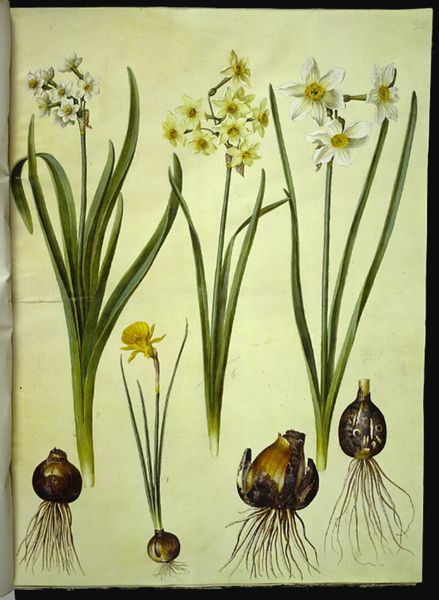
Muscari botryoides (almindelig perlehyacint); Muscari racemosum (muskat-perlehyacint); Muscari neglectum 1649 - 1659
0:00
0:00
drawing, coloured-pencil, gouache
#
drawing
#
coloured-pencil
#
baroque
#
gouache
#
coloured pencil
#
academic-art
#
botanical art
Dimensions: 505 mm (height) x 385 mm (width) (bladmaal)
Hans Simon Holtzbecker rendered these depictions of Muscari, or grape hyacinths, in watercolor and gouache. Holtzbecker was working in 17th century Northern Europe where the social and economic elite cultivated elaborate gardens as expressions of wealth, power, and their dominion over nature. Botanical drawings were scientific instruments and status symbols. Note the artist’s precision and attention to detail. Holtzbecker documents each plant's bulbous roots, slender green leaves and the unique flower spikes. He meticulously captures the distinct forms and colors of each variety: Muscari botryoides with its sky-blue clusters, muscari racemosum's deep violet hues, and the darker shade of muscari neglectum. While seemingly objective, botanical art was deeply intertwined with the social and economic structures of the time. It spoke to a desire to classify and control the natural world. These drawings also functioned as records of private property. Look closely and consider how these delicate images reflect a complex interplay of science, status, and the human desire to tame nature.
Comments
No comments
Be the first to comment and join the conversation on the ultimate creative platform.
